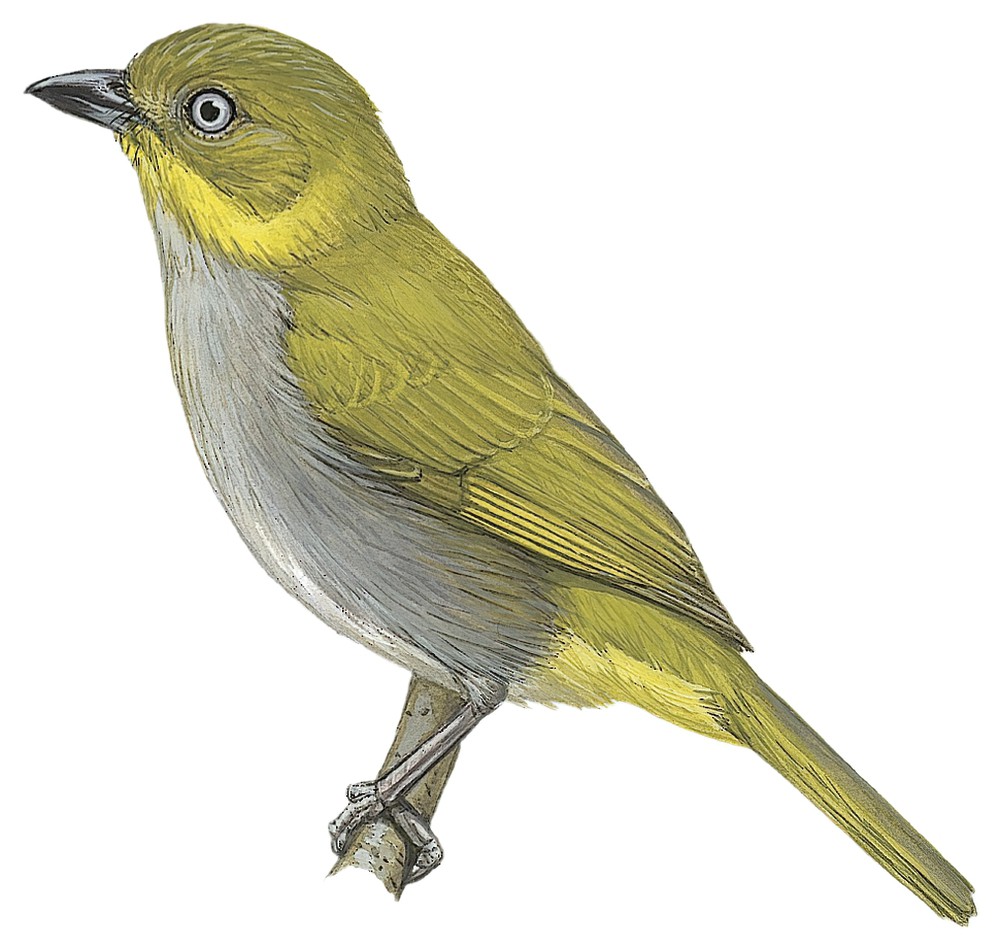Short-billed Chlorospingus / Chlorospingus parvirostris

Short-billed Chlorospingus
SCI Name:
Protonym: Chlorospingus flavigularis parvirostris Bull.Am.Mus.Nat.Hist. 14 p.227
Taxonomy: Passeriformes / Passerellidae / Chlorospingus
Taxonomy Code: shbbut1
Type Locality: Inca Mine [= Santo Domingo, Marcapata] , southeastern Peru.
Author: Chapman
Publish Year: 1901
IUCN Status: Least Concern
DEFINITIONS
CHLOROSPINGUS
(Passerellidae; Ϯ Common Bush-tanager C. flavopectus ophthalmicus) Gr. χλωρος khlōros green; σπιγγος spingos a form of σπινος spinos, probably identical to σπιζα spiza a finch (< σπιζω spizō to chirp) commonly eaten at Athens, and identified by most authors as the Chaffinch, but the names could just as well have applied to any small bird. In ornithology the epithets spingos and spiza used in combination are not confined to the finches (Fringillidae), but used indiscriminately for an assortment of finch-billed or finch-like birds (e.g. Ploceidae, Thraupidae, Emberizidae, Passerellidae, Cardinalidae, Drepanididae). The Common Bush-tanager, Chlorospingus or Bushfinch and its congeners were formerly treated as tanagers Thraupidae; "Gen. CHLOROSPINGUS nov. gen *) Grün-Ruderfink. 719. 1. Ch. leucophrys Nob. — **) Tanagra leucophrys Licht. in Mus. Berol. ... *) Von χλωρος, grünlich und σπιγγος nom. prop. — In der Bildung der Flügel und des Schwanzes ist die Gruppe der vorhergehenden [Hemispingus] noch sehr ähnlich, der Schnabel hingegen ist stärker, kürzer, höher und daher dem Typus von Pipilo annähernd ähnlich, nur schwächer als in dieser Gattung, welche grössere Formen aufweist und von welcher sich Chlorospingus ausserdem durch nicht abgerundete Flügel und Schwanz wesentlich unterscheidet. **) ... Die folgenden, uns nicht genügend bekannten Arten scheinen der hier beschriebenen sehr ähnlich zu sein: 1. Ch. ophthalmicus. — Arremon ophthalmicus Dubus. Tachyphonus albitempora Lafr. Columbien. — 2. Ch. flavipectus. — Arremon flavopectus Lafr. Rev. Zool. 1840 p. 227. St. Fé d. Bogota. — 3. Ch. canigularis. — Arremon canigularis Lafr. Rev. Zool. 1848 p. 12. — Columbien." (Cabanis 1853); "Chlorospingus Cabanis, 1851, Mus. Heineanum, 1, p. 139. Type, by virtual monotypy, Chlorospingus leucophrys Cabanis = Arremon ophthalmicus Du Bus." (Storer in Peters, 1970, XIII, p. 254).
Synon. Hylospingus.
parvirostris
L. parvus small; -rostris -billed < rostrum beak.
● ex “Pato pico pequeño” of de Azara 1802-1805, no. 432 (syn. Anas sibilatrix).
● "54. Tetrao, L. 141. urogallus, L. (major, Br. crassirostris, Brehm. hybridus, L. cum Lyr. tetrice. medius, Leisl. intermedius, Langsd. pseudourogallus, Brehm. maculatus, Brehm. urogalloides, Nilss.) 142. parvirostris, Bp. (urogalloides, Middend.)" (Bonaparte 1856). According to Mlíkovsky 2012, "the Black-billed Capercaillie should be called Tetrao urogalloides Middendorff, 1853, not Tetrao parvirostris Bonaparte, 1856." (syn. Tetrao urogalloides).
SUBSPECIES
Short-billed Chlorospingus (huallagae)
SCI Name: Chlorospingus parvirostris huallagae
huallagae
Río Huallaga, Libertád/San Martín, Peru.
Short-billed Chlorospingus (medianus)
SCI Name: Chlorospingus parvirostris medianus
medianum / medianus
L. medianus middle < medius middle (e.g. between two other forms; in the middle of a country).
Short-billed Chlorospingus (parvirostris)
SCI Name: Chlorospingus parvirostris parvirostris
parvirostris
L. parvus small; -rostris -billed < rostrum beak.
● ex “Pato pico pequeño” of de Azara 1802-1805, no. 432 (syn. Anas sibilatrix).
● "54. Tetrao, L. 141. urogallus, L. (major, Br. crassirostris, Brehm. hybridus, L. cum Lyr. tetrice. medius, Leisl. intermedius, Langsd. pseudourogallus, Brehm. maculatus, Brehm. urogalloides, Nilss.) 142. parvirostris, Bp. (urogalloides, Middend.)" (Bonaparte 1856). According to Mlíkovsky 2012, "the Black-billed Capercaillie should be called Tetrao urogalloides Middendorff, 1853, not Tetrao parvirostris Bonaparte, 1856." (syn. Tetrao urogalloides).
UPPERCASE: current genus
Uppercase first letter: generic synonym
● and ● See: generic homonyms
lowercase: species and subspecies
●: early names, variants, mispellings
‡: extinct
†: type species
Gr.: ancient Greek
L.: Latin
<: derived from
syn: synonym of
/: separates historical and modern geographic names
ex: based on
TL: type locality
OD: original diagnosis (genus) or original description (species)












